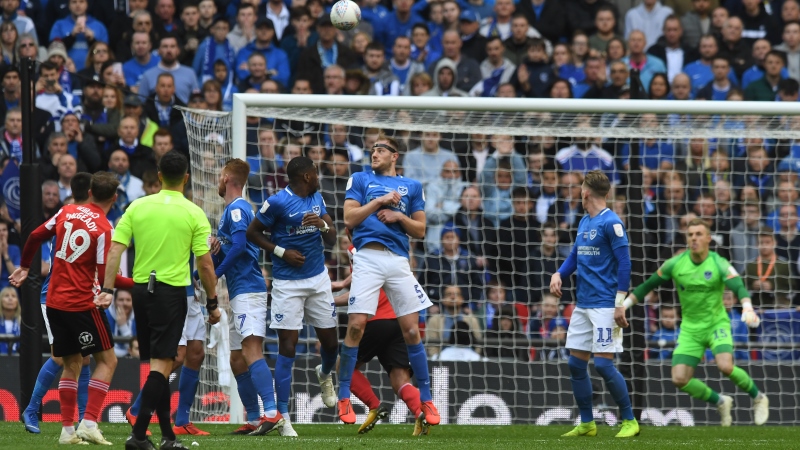
King sport has very strict rules that players must follow if they do not want to be punished. One of them is the indirect free kick law has many interesting points. So when does indirect punishment take place? Is it different from other fixed penalty situations?
Table of Contents
What Is An Indirect Free Kick?
As we all know, direct free kick will have to be taken outside the penalty area. In contrast, penalty kick is taken on 11m dots. However, the indirect free kick differs from the above two situations. The team may be awarded an indirect penalty at any position on the field.
One thing that players need to note is that the indirect penalty cannot score like the two free kick situations mentioned above. Instead, it is necessary to pass the ball of another player to count it as a goal (if any). This is an interesting point of this free kick situation.
See Top 1 Betting in Vietnam: https://lucky88.net
Understand Indirect Penalty Kicking Rules
Under the indirect free kick rule, the referee will stop the match and give a symbol. Specifically, the black king will raise his arms up high. The umpire remains in the position until the free kick has been taken, out of bounds or touched by another player. Any position on the court may cause an error resulting in an indirect penalty.
Indirect Penalties In Football Today
We will divide the error situations leading to indirect penalties into 2 parts: Goalkeeper and the rest of the players.
Goalie
According to football rules, a goalkeeper who has one of the following 5 errors will cause the home team to take an indirect free kick situation:
- The goalkeeper does not quickly bring the ball into play. Specifically, if he keeps the ball in his hand for 6 seconds, he will be penalized indirectly. This behavior is said to be time consuming and not fair-play in football.
- The goalkeeper touches the ball but does not explicitly catch it when the opponent attempts to steal the ball. Such a situation may cause the opponent to have an indirect free kick in the penalty area.
- Once the ball has been put into play, the goalkeeper must wait for another player to touch it to be allowed to catch it again. If the goalie touches or catches the ball when no one has touched it, the penalty is indirect.
- When a teammate intentionally uses the ball to return the ball, the goalkeeper is not allowed to use his hand. Under the indirect penalty rule in football, goalkeepers are only allowed to catch when the team-mate uses the first pass.
- Finally, the goalkeeper must not catch or touch the ball when the team throws in. Instead the janitor must use his feet to handle the ball.
Football Player
The player will cause the home team to be indirectly penalized for the following errors:
- The player intentionally plays a dangerous ball, attempting to take out the opponent.
- The player obstructs the opponent illegally while the opponent is rising.
- A player who prevents the goalkeeper of your team from putting the ball into the match.
At this time, indirect penalty will be taken where the error occurred. This is different from the goalkeeper because the temple guards easily cause the home team to be indirectly punished within 11m.
These Situations May Occur
In indirect free kick situations, there are 3 situations when the ball enters the golf:
The ball flies directly to the opponent’s goal, the opposing team is awarded the ball. According to the law, goals from indirect free kicks must go through another player’s touch. If the ball is shot directly at goal, the goal is not recognized.
The ball enters the opponent’s golf ball after touching another player, the goal is recognized. At this time the player is considered to score under the law. Therefore, when watching football, we often see a player pushing the ball for his teammates to shoot when indirect penalty.
World football has seen many free-kicks in the home net. If it is a direct penalty then the soccer team is charged. However, the indirect penalty is the opposite. The ball enters the home team’s goal baseline.
Technical Implementation Of Indirect Kick
Indirect free kicks are usually taken outside the penalty area. At this time the distance to the goal is far. Players often select situations where the ball is hung up for the team.
If penalty kicks are taken in penalty area, each team will need two players to participate. The shot must have good finishing technique and enough danger. The other person in front of the ball makes a reasonable pass, medium range. For the defensive team, they are allowed to use all 10 players standing in front of the fence. The goalkeeper will stand in the most favorable position to rush out to catch the ball.
Indirect free kick is one of the interesting situations, bringing many surprises in football. So you understand the law and how to perform this free kick situation. Do not let yourself be penalized indirectly in the match as it often leads to goals for the opponent. Hope has provided you with useful information.


